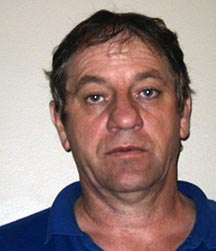Working on a Challenge Elevates Aerospace Engineering Designer
Interview with IdeaConnection Problem Solver Angus Campbell
Engineering designer Angus Campbell works in the aerospace industry for a leading global company.
An inveterate problem solver who loves the creative processes involved in engineering challenges, he also has a patent for an adjustable wrench with the Canadian Intellectual Property Office. Here he talks about his work, and his experience being part of a successful IdeaConnection problem solving team.
 I’m an engineering designer, which is not quite the same as an engineer. We are a liaison between the shop floor and engineering departments. We design parts that are approved by engineers and used by the shop floor. The particular field I work in is in modifying existing planes for surveillance and search and rescue. It’s installing equipment on a plane that wouldn’t usually be on a plane.
I’m an engineering designer, which is not quite the same as an engineer. We are a liaison between the shop floor and engineering departments. We design parts that are approved by engineers and used by the shop floor. The particular field I work in is in modifying existing planes for surveillance and search and rescue. It’s installing equipment on a plane that wouldn’t usually be on a plane.People in my profession are somewhere between a craftsman and engineer so we work both ends of the stick: we go down to the shop floor and gather information and put it towards a design that an engineer will assess from an engineering point of view.
I like to design things. You can be very creative when coming to designing stuff. Even though it may seem repetitious every design is pretty much different and needs different solutions and has different problems. There’s also the physics of it, and how you apply the physics involved in things like pressure, gravity and strength of materials. I excelled at that in school and it’s a field I really enjoy.
Although when it comes to the marketing side of things, say with my patent, that’s really where most people who are innovative and creative need help. I’m a firm believer that with creativity, you either have it or you don’t. But marketing is a whole different thing, not everybody is a Bill Gates or a Steve Jobs. This is my drawback. I can be creative, but I can’t be a good marketer. Some people do have that gift.
First Time Working on an IdeaConnection Problem Solving Team
Initially I was a bit nervous but as time went on I became more comfortable with the idea of presenting ideas to the group. Our approach was to present several ideas and let the seeker decided which ones were the best. The seeker thought this was impressive.
I had no idea what the solution would be when we embarked on the challenge, but a combination of ideas and inputs from each member generated five solutions, two of which we knew stood out better than the rest.
Working on a team with individuals from different disciplines was not unusual for me. I work in the aerospace industry and that type of approach is common; solving problems by drawing on expertise from different areas. Each person can offer insights and where some people might be OK with an aspect of a project an individual with particular expertise can point out all the reasons why it might not work. They have the knowledge, and they can also reign you in if you get too broad in your scope
The Thrill of the Challenge
Personally I like designing stuff and that was the most enjoyable part of the challenge – gathering different ideas and putting them toward some kind of model, and incorporating them into drawings so other team members could have an understanding.
The initial gathering of ideas was the most difficult part because not only did the ideas have to be feasible they also had to be cost-effective and practical. I mean you can have the streets paved with gold if you want to pay for them, but is it practical? Of course not. We had to ask ourselves – is this going to work? Is this most cost-effective? And is it implementable?
When it comes to the process of solving problems you take as many solutions as you can get and then you limit them by whatever process you have, and ours was – is this going to work? That was probably our main concern, and we had to be careful not to duplicate other ideas that were already on the market.
The facilitator helped a lot; it’s like having a mother around who kept us on the straight and narrow so we didn’t deviate too far from our goals. The facilitator kept us focused more so than the other team members.
Successful Solution
My team received a partial award for our solution, and the rest is contingent on prototype work. It meant a lot to be recognized for our ideas because we put a fair amount of work into them and it shows that they are worthwhile.
If the opportunity arose I would work on another challenge, but it would have to be in my particular area of expertise. I can see myself getting involved again.
